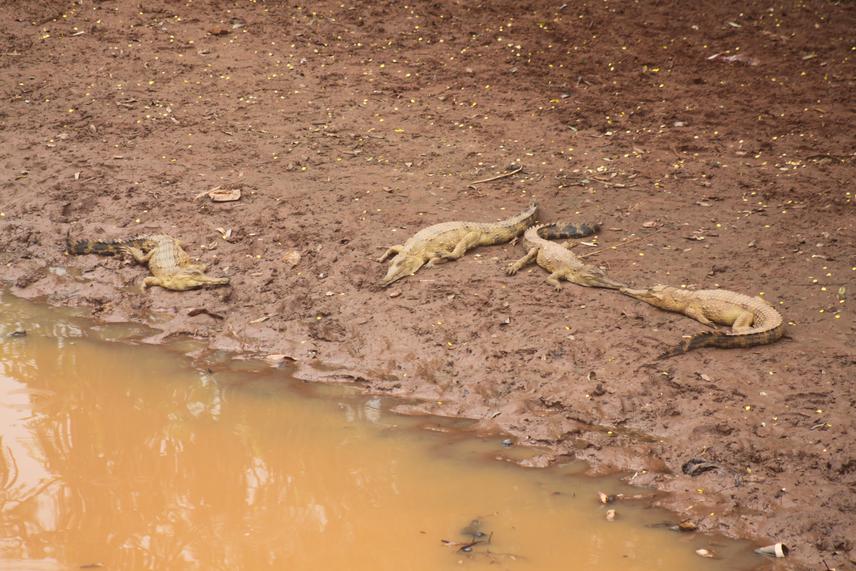Emmanuel Amoah
Other projects
22 Jun 2017
Saving the Vulnerable West African Dwarf Crocodile from Local Extinction: A Community Approach in Awniafutu, Ghana I
7 Jan 2020
Saving the Vulnerable West African Dwarf Crocodile from Local Extinction: A Community Approach in Awniafutu, Ghana II
The Critically Endangered West African slender-snouted crocodile (Mecistops cataphractus) is one of the rarest crocodylians globally (Shirley et al. 2018). Its population has declined between 70–90% for the past three generations (75 years) due to unregulated hunting and habitat losses (Shirley 2014). M. cataphractus is ranked 45th among the top 100 Evolutionary Distinct and Globally Endangered (EDGE) reptile species. Recent surveys across West Africa, including Ghana, suggest that M. cataphractus populations are fast deteriorating, with a reported mean encounter rate of 0.029 crocodiles/km (Shirley et al. 2009).

Juvenile West African slender-snouted crocodiles basking in the Tano River at Techiman. © Threscoal.
In 2017, through my EDGE fellowship, I discovered a traditionally protected population of M. cataphractus at the Techiman-Tanoso stretch of the Tano River. With a mean encounter rate of 2.71 crocodiles/km (E. Amoah unpublished data), the site currently holds the largest known population of M. cataphractus outside a protected area in West Africa (M.H. Shirley pers.com). Regrettably, this population is threatened by rapid riparian vegetation losses, domestic waste pollution, and poor local conservation awareness. M. cataphractus constructs nests using dead leaves in forests (Shirley 2014). Unfortunately, my four-year research revealed that suitable nesting areas are scarce and the remaining forest patches are under threat from farming activities.
Through previous conservation efforts, we have increased local conservation awareness across 3 communities by 72% and reduced riparian vegetation losses by 60%. We have also replanted 30 hectares of degraded nesting habitats and trained 10 local volunteers to support our local activities. With this grant, we will expand our conservation efforts to an additional 4 communities. Specifically, we will replant an additional 10 hectares of degraded nesting habitats, train an additional 12 local volunteers, and reach out to over 5000 indigenes through tailored awareness campaigns and stakeholder engagements. This project will help reduce riparian vegetation losses, improve nesting areas, and also enhance grassroots support.
Header: Team member Gideon Appiah removing seedlings to be transported to site. © Threscoal.